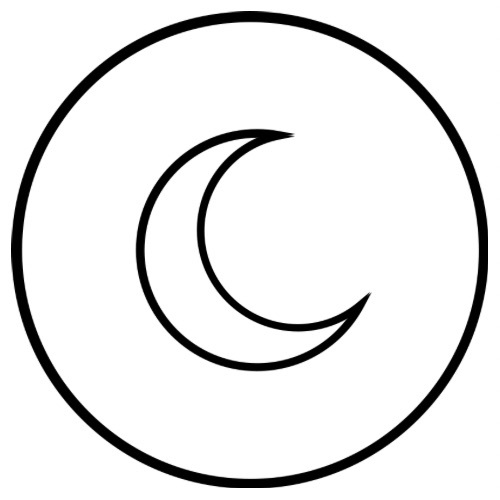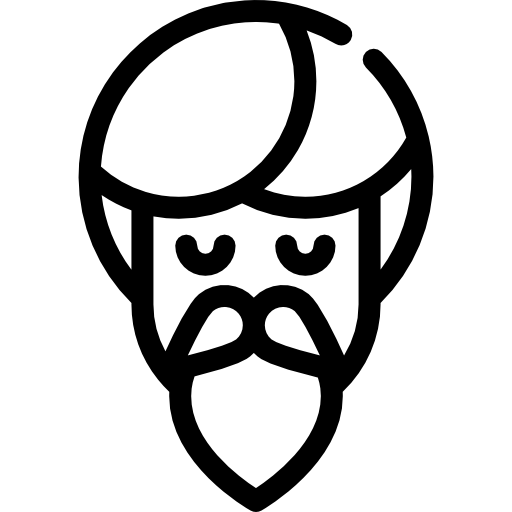
YOGASVARUPE
Schools and Traditions of Tantra
There are three distinct Tantrik traditions - Dakshina, Vama, and Madhyama. They represent the three "shaktis" or powers of Shiva and are characterized by the three "gunas" or qualities - "sattva", "rajas" and "tamas". The Dakshina tradition, characterized by the "sattva" branch of tantra is essentially for good purpose. The Madhyama, characterized by "rajas" is of mixed nature, while the Vama, characterized by "tamas" is the most impure form of tantra.
There are 3 major schools of Tantra. These 3 schools were classified to avoid ambiguity. As time progressed, Tantra practitioners developed many types, forms of techniques, practices, and traditions of Tantra. It was all haywire, scattered and confusing; with not one technique related to another. Due to this, it was hard to find any sort of linkage even between Tantra rituals of the common.
There are 3 major schools of Tantra. These 3 schools were classified to avoid ambiguity. As time progressed, Tantra practitioners developed many types, forms of techniques, practices, and traditions of Tantra. It was all haywire, scattered and confusing; with not one technique related to another. Due to this, it was hard to find any sort of linkage even between Tantra rituals of the common.

Kaula, Mishra, and Samaya are the 3 major Schools of Tantra.
- Kaula (left and right): all external practices
- Mishra: mixed
- Samaya (special and general): all internal practices
- Shakta (shakti)
- Shaiva (shiva)
- Vaishnava (Vishnu)
- Vama (left hand school)
- Madhayama (middle)
- Dakshina (right)
- Kaula School of Tantra is one of the major schools of Tantra which is further divided into two sub-schools. These sub-schools are differentiated basis the rituals used by these two sub-schools, various rituals practiced, employment of method, etc.
- Mishra School of Tantra is essentially a blend of external and internal energy sources by Practicing partly meditative and partly ritual-based techniques.
- Samaya School of Tantra focuses only on the internal realm of consciousness and how to tap into its source to feel one with the Divine energy.

- It is often taught that there are two schools of Tantra, the left-handed path and the right-handed path, depending on the nature of the practices. However, these two are actually divisions within one school, that of Kaula Tantra. The other two are the Mishra and Samaya schools of Tantra. All systems or methods of Tantra fall into one of these three schools, though there may be many subdivisions within these three.
- The Kaula Tantra school utilizes external practices and rituals, while the Samaya school is completely an internal process. The Mishra Tantra school mixes the external practices and rituals, along with internal practices. The three schools are progressively higher, with Kaula Tantra being the lower, Mishra Tantra going further inward, and Samaya Tantra for those who are prepared to do the advanced practices.
- By being aware of all three schools of Tantra, one can more wisely see how Tantra might fit into his or her personal spiritual practices, not limiting one's scope to the choice between the two Kaula Tantra paths.
- Each of the three schools of Tantra believes in purifying the body, breath, mind, and the latent impressions called samskaras, which are the driving force behind karma. The purifying process is called bhutashuddhi, which means purifying the five elements of earth, water, fire, air, and space in the various ways in which they manifest.
- Each of the schools of Tantra also practices methods for awakening the spiritual energy of kundalini, though the methods and the height attained in that kundalini awakening may differ. Some of the methods of Tantra are taught under the names Kundalini Yoga or Kriya Yoga.
Kaula Tantra
Kaula Tantra is external Tantra that focuses on concrete practices and rituals. The left-handed Tantrics perform their worships with the use of meat, fish, intoxicants, mudras (certain gestures), and sexual contact. The right-handed Tantrics perform these rituals only symbolically.
Kaula Tantra focuses its practice on the Muladhara chakra, the first chakra, at the base of the spine. The Kaula Tantra practices are training for having control over the lower desires and physical needs of the body. The energy of the kundalini awakening is considered the divine feminine force and is to be revered rather than used for mere sensual gratification.
Some right-handed Kaula Tantrics explain that their practice is higher than the left-handed, by virtue of the right-handed practices being only symbolic. Some of the practitioners of left-handed Tantrics explain that their practices are higher than the right-handed by virtue of their secrecy, pointing out that it is harder to find a teacher of these processes.
Kaula Tantra focuses its practice on the Muladhara chakra, the first chakra, at the base of the spine. The Kaula Tantra practices are training for having control over the lower desires and physical needs of the body. The energy of the kundalini awakening is considered the divine feminine force and is to be revered rather than used for mere sensual gratification.
Some right-handed Kaula Tantrics explain that their practice is higher than the left-handed, by virtue of the right-handed practices being only symbolic. Some of the practitioners of left-handed Tantrics explain that their practices are higher than the right-handed by virtue of their secrecy, pointing out that it is harder to find a teacher of these processes.
However, both schools of Kaula Tantra will sometimes miss the fact that Mishra Tantra and Samaya Tantra schools are still more advanced than either of the Kaula Tantra schools. Possibly this is because of human nature that wants to justify a current level of attainment as higher than it really is. Swami Rama has explained that Kaula Tantra is for those who are not very intelligent and have less awareness, that it is for the third class student, while Mishra Tantra and Samaya Tantra are for the second and first-class students.

Much has been written about Kaula Tantra's practices (though much more is not written). The Sanskrit scholars have access to many thousands of hand-written manuscripts about the mantras and rituals that go along with these practices. Some of these are reportedly useful, while others have been called little more than gossip.
For the student seeking this path, there appear to be many choices of places to go, people to learn from, books and manuscripts to read, and rituals to perform. It is no wonder that Kaula Tantra is the Tantra that has become so well known in these modern times.
However, the student would do well to be wary when choosing a teacher, as there seems to be a great deal of less than authentic guidance available. Some of the modern behaviors that have been labeled Tantra are only hedonism given a spiritual name and are taught by people with little knowledge or experience of authentic Kaula Tantra or the higher schools of Tantra.
For the student seeking this path, there appear to be many choices of places to go, people to learn from, books and manuscripts to read, and rituals to perform. It is no wonder that Kaula Tantra is the Tantra that has become so well known in these modern times.
However, the student would do well to be wary when choosing a teacher, as there seems to be a great deal of less than authentic guidance available. Some of the modern behaviors that have been labeled Tantra are only hedonism given a spiritual name and are taught by people with little knowledge or experience of authentic Kaula Tantra or the higher schools of Tantra.
Mishra Tantra
Higher than the Kaula Tantra school is the Mishra school of Tantra. Mishra Tantra performs both external and internal rituals and is thus a mixture. Mishra means mixedMishra Tantra focuses its practice on the Anahata chakra, the fourth chakra, at the heart center, where there is devotion practiced to the mother, feminine, or creative principle of the universe.
The Mishra Tantra practices are inner practices (antaryaga), and direct the one-pointed mind inward. The pujas or rituals are done in the field of mind and are thus referred to as manas puja, or mental rituals. These pujas are done with feelings of devotion and non-attachment and do not involve any external objects.
The energy from kundalini awakening is brought upward from the root chakra to the heart chakra, the space between the breasts, where it is experienced as a relationship with the divine.
The Mishra Tantra practices are inner practices (antaryaga), and direct the one-pointed mind inward. The pujas or rituals are done in the field of mind and are thus referred to as manas puja, or mental rituals. These pujas are done with feelings of devotion and non-attachment and do not involve any external objects.
The energy from kundalini awakening is brought upward from the root chakra to the heart chakra, the space between the breasts, where it is experienced as a relationship with the divine.
Samaya Tantra
Higher than both the Kaula Tantra and Mishra Tantra schools is the Samaya school of Tantra. It is a purely yogic practice, without any external rituals. Its entire purpose is Self-Realization, ultimately leading to moksha, final liberation.
The word Samaya literally means "I am with you," referring to the bestowing of shakti from within through shaktipat (not that an external person is with you). Through meditation and this divine inner companionship, the aspirant is guided in non-attachment to the external pleasures, channeling the energy of kundalini awakening ever upward to spiritual union.
Samaya Tantra seeks to practice at the Sahasrara chakra, the seventh of the seven major chakras, at the crown of the head. Along the upward journey (urdhva retas), each of the other chakras is illumined by the awakened kundalini. The meditators of the Samaya Tantra school focus on the Ajna chakra, in the space between the eyebrows, after which the antaryaga, inner practice, is done in the Sahasrara, crown chakra.
The word Samaya literally means "I am with you," referring to the bestowing of shakti from within through shaktipat (not that an external person is with you). Through meditation and this divine inner companionship, the aspirant is guided in non-attachment to the external pleasures, channeling the energy of kundalini awakening ever upward to spiritual union.
Samaya Tantra seeks to practice at the Sahasrara chakra, the seventh of the seven major chakras, at the crown of the head. Along the upward journey (urdhva retas), each of the other chakras is illumined by the awakened kundalini. The meditators of the Samaya Tantra school focus on the Ajna chakra, in the space between the eyebrows, after which the antaryaga, inner practice, is done in the Sahasrara, crown chakra.
Samaya Tantra and Raja Yoga (Yoga Sutras) are similar, though the Samaya Tantra practice is subtler, and is a path practiced by very few people. It is the most advanced of the schools of Yoga and Yoga meditation. Samaya Tantra practices Sri Vidya, the mother of all the vidyas (ways of knowing). Because of its subtler nature, and the fact that the higher teachings are imparted in meditation, rather than on meditation, there is far less written about Samaya Tantra than Kaula Tantra or Raja Yoga. The aspirant purifies the samskaras through the fire of guru chakra, as well as receiving the downward flowing intuitions.

Samaya Tantra is ultimately more like a deep communion with the creative force of the universe than worship in a ritualistic sense. It brings an intense and inexplicable joy that is beyond time, space, and causation, as one becomes like a divine child, frolicking in the union of the mother and father principles of the universe, which is the oneness of all. Not only is there realization in itself, but there is also an outward flowing of the effect of this through each of the koshas.





